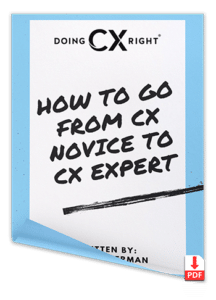Enter the world of Lindsey, a seasoned customer service agent who begins another day in the call center. Previously, her days were marked by routine, addressing customer issues with limited tools and a narrow scope of authority. Encounters with irate customers often left her feeling helpless, bound by rigid protocols and outdated systems. However, today is different.
Lindsey is put to the test during a phone call with an angry customer. This time, however, she wields advanced technology that enables her to address the customer’s concerns more efficiently than ever before. Empowered with the authority to make real-time decisions that align with both customer needs and the company’s objectives, Lindsey operates within a framework of broader organizational goals shaped by clear leadership directives and collective feedback.
This incident signifies a pivotal shift, highlighting the urgent need for strategic customer service evolution. This article, informed by industry leader insights and my own experiences, dives into the critical actions that customer service organizations must embrace to create such positive outcomes consistently.
The call that Lindsey had stands as a significant moment. It showcases the tremendous impact of her company’s newly implemented strategies.
As we’ve entered 2024, Lindsey’s experience is a valuable example to analyze how starting, stopping, and keeping particular practices can reshape the customer service industry. It is a lens that we can use to understand how these principles are changing the customer service landscape.
Start Doing
Elevating Frontline Employees: A Strategic Move
I recommend fully embracing agent empowerment and customer-centric strategies. This approach is exemplified by Lindsey’s story, where her ability to utilize advanced tools and make real-time decisions aligns perfectly with customer needs and organizational objectives. Lindsey’s experience demonstrates the effectiveness of understanding and applying broader organizational goals in day-to-day interactions, making each customer interaction not just a task but a significant part of the company’s mission.
Additional Customer Service Leaders’ Views:
Dave Seaton: “Start identifying the moments that have the biggest impact on the experience you want to manage or improve. Whether you’re focusing on the agent experience or the customer experience, listen to the people having the experience as they are working towards their goals. Pinpoint the specific interactions that matter most, and focus improvement efforts there.”
Jeremy Watkin: “Start doing a better job of helping our agents understand why we ask them to do the things they are required to do on every customer interaction. For example, why is it important that you note when a customer asks for something we cannot do? It’s because this helps our product team and others continue to innovate and improve our product offering.”
Nate Brown: “Start treat service workers like capable, creative adults. Give them opportunities to see more of the customer journey and bandwidth to assist in designing improved experiences.”
Sheri Kendall “Start creating spaces that cultivate a best friend at work culture. Virtual teams should encourage connections between humans by creating space at the beginning of meetings to share their weekend plans, hobbies, pictures of family, etc., host fun virtual events, and encourage participation or begin a practice of cross-functional meet ‘n greets.”
Jeremy Hyde: “Start teaching your leaders how to build a business case and navigate your organization. Too often, contact center leaders are frustrated because they can’t get their important projects approved. Understanding what “moves the needle” within the organization and building a case that aligns to the values of the org is the first step to getting things done. I can’t guarantee you will always get what you want but let’s put your team in the best position possible!”
Lisa Guzman: “Start promoting from within, but with intention. It isn’t about who has been there the longest, but rather who is ready to take things to the next level. I’ve seen too many times where people were promoted due to tenure and/or being well-liked but not ready for the role. This can lead to not only their failure but the failure of those who they lead.”
Stop Doing
Revising Approaches for Optimal Service
It’s imperative for customer service organizations to eliminate practices that hinder progress. Drawing from Lindsey’s experiences, it becomes clear that we must actively remove barriers that stifle agent autonomy and creativity. It’s about discarding outdated protocols and rigid structures that limit our ability to respond to customer needs effectively. Embracing flexibility and adaptability will not only enhance our service quality but also empower our agents to deliver more meaningful and personalized customer experiences.
Additional Customer Service Leaders’ Views:
Jeremy Hyde: “Stop allowing abusive customer behavior and perpetuating the “customer is always right” type statements. Last week, an upset customer called my wife’s cell phone at 10pm. You may be wondering “what were they upset about?!” Frankly, it doesn’t matter, we need to establish clear boundaries with customers. Cussing, threats, and hunting down a leader’s personal contact information is inappropriate, and our teams shouldn’t have to put up with it.”
Lisa Guzman: “Stop having your top performers carry the entire team and/or promising them a career path that isn’t detailed and time-oriented. This is one of the leading causes of burnout and attrition.”
Dave Seaton: “Stop playing Whac-a-Mole with pain points. You’re treating symptoms while the disease rages on. Zoom out, understand the journey, and address the root causes of the perceived pain. Often, you will find the cause of the pain point happened several steps before the pain is experienced.”
Nate Brown: “Stop putting agents into a strict “ticket taker” box. Bring excitement and variety into the job as they grow and become even more capable.”
Sheri Kendall: “Stop hosting pizza parties, pajamas at work day and coloring contests and labeling the activities as “engagement.”
Jeremy Watkin: “Stop asking agents to do things without good reason during customer interactions. Chances are that agents already know that the activity is meaningless and has no value. Instead, make sure they always, always, always understand how valuable their work is to the organization and to the overall customer experience.”
Keep Doing
Sustaining Success in Customer Service
I highly recommend you continue fostering a workplace where education, growth, and empathy are shared goals for everyone.
Reflecting on Lindsey’s journey, we see how essential it is to nurture a supportive and collaborative environment. This includes ensuring customer service agents feel valued, their well-being is prioritized, and their voices are heard in decision-making processes. By doing so, we not only enhance agents’ ability to deliver exceptional service but also build a resilient and adaptive team ready to meet the ever-evolving demands of customer service.
Additional Customer Service Leaders’ Views:
Sheri Kendall: “Keep the well-being of your agents in mind when designing your organization’s strategy. A memorable customer experience begins with a memorable agent experience. Before you implement a new process, policy, or tech review it from the agent’s perspective and ask yourself what the agent will need in order to be successful.”
Jeremy Hyde: “Keep learning and networking! The more you invest in yourself, the stronger you will be for your team and your customers. There are tons of local and national opportunities to develop yourself and build a network full of amazingly smart people. It just takes a small amount of effort and is worth every minute you put in!”
Nate Brown: “Keep the true mission of the organization front and center. Use it to intrinsically motivate as much as possible. Keep the integrity in the Voice of Customer process so people truly understand the positive and negative impact they are having on the brand promise.”
Lisa Guzman: “Keep your culture and core values top of mind, especially as your business grows. When employees can depend on your organization to keep its promises, even (or perhaps especially) in difficult times, you will gain a loyalty that money can’t buy.”
Dave Seaton: “Keep asking your team about the bright spots of 2023. What are they most proud of? What gave them hope? What made their jobs easier? Conduct a retrospective and commit to continuing the best things of 2023 and improving the rest.”
Jeremy Watkin: “Keep improving your one-on-one conversations with your agents. Don’t just chit chat. Focus on their career and how they can do their job better. Use that precious time to train, empower and equip them. This is critical for their development and will improve the experience for your customers as well.”
Conclusion: Leading Customer Service Evolution
Lindsey’s transformative journey, marked by pivotal customer interaction, underscores the profound potential of strategic customer service practices. As we venture through 2024, our imperative is to empower our teams with essential tools and knowledge, revamp antiquated practices, and reinforce successful strategies. This approach is key to consistently delivering impactful customer experiences, thereby redefining industry standards.
Envision your organization’s future: How will you implement these transformative strategies to cultivate an environment where both customers and agents, like Lindsey, thrive?
This article is part of the Vistio Knowledge Collective






